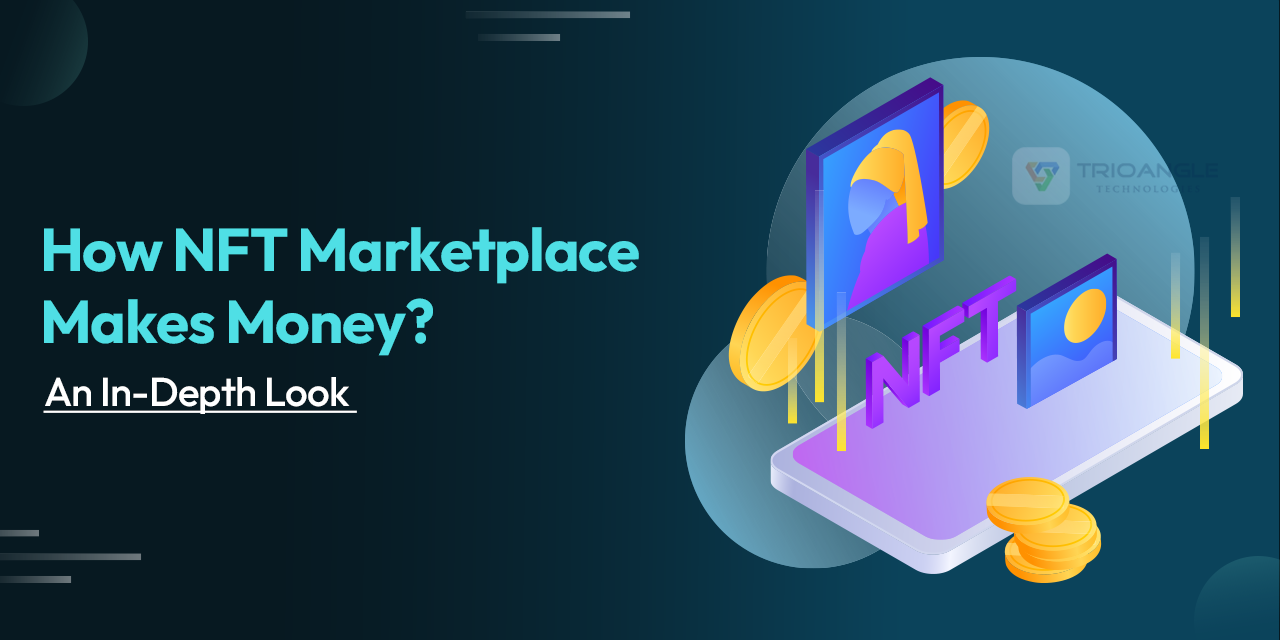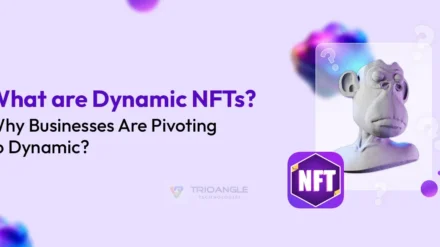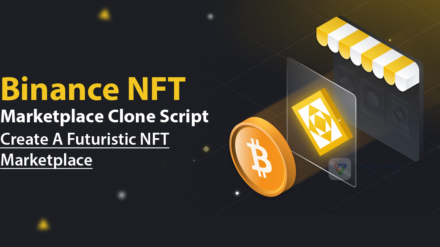Hello From The World Of NFTs where virtual cats are worth more than your entire savings, and art is traded like high-speed baseball cards. Well, have you ever wondered how NFT Marketplace makes money? It’s like a magician pulling a rare cryptopunk out of a hat worth millions instead of a rabbit.
Interesting Right?
OK! In this blog, we’ll delve into the magic of NFT Marketplace revenue streams, from transaction fees to partnerships, which can be as complicated as explaining blockchain to an elderly cousin. So, get your digital wallet ready to learn NFT market earnings!
Secret Behind The Growth Of NFT Marketplace
2024 sees significant expansion of the NFT marketplace driven by various trends and developments. The emergence of decentralized NFTs is a breakthrough, allowing more investors to hold pieces of valuable digital assets such as artwork, improving access and increasing liquidity. This development enables a wide range of people to join the market by investing in smaller assets, leading to increased trading volumes and market activity.
Also, NFT Marketplaces are increasingly specialized, focusing on specific sectors such as gaming, music, and sports to promote strong social engagement and personalized user experiences. It also, integrates conventional financial services into NFT platforms, offering features such as lending, borrowing, and asset management, thus expanding the range of applications for NFTs beyond collections.
Furthermore, the significant increase in NFT Marketplaces in 2024 can be credited to various important factors that have changed the digital environment. Integrating cutting-edge technologies such as AI and augmented reality has enhanced the user experience, enabling users to engage with NFTs in more immersive and engaging ways. Also, partnerships with popular brands and celebrities create widespread interest in NFTs, broadening the audience and lending credibility to the market.
The emergence of web3 and decentralized finance (Defi) has given creators and collectors more opportunities to own and monetize their work. Also, the growing craze for digital assets as a hedge against inflation and volatility in traditional markets has prompted a growing number of investors to consider NFTs as alternative options for investments. As the NFT market landscape continues to experience changes, these factors are driving significant growth and innovation.
How Does NFT Marketplace Makes Money?
There are many ways that NFT marketplaces makes money. Let’s look at the major NFT marketplace revenue streams…
Transaction Fees
Charging transaction fees is a common revenue model for the NFT marketplace. When a user buys or sells an NFT on the platform, the marketplace usually deducts a fee from the transaction value. The fees can vary anywhere from a small percentage to a significant portion of the transaction. Most NFT Marketplace makes money through Transaction fees, helping to support their operations and provide users with a venue for NFT trading.
Listing Fees
Some NFT marketplaces require artists or sellers to pay a listing fee to list their NFTs for sale. Fees may vary based on market visibility, listing period, and available visibility features. Charging for listings helps fund the maintenance of the marketplace and allows artists and sellers to reach potential buyers.
Minting Fees
Many NFT platforms require creators to mint their NFTs, a process that turns their digital files into blockchain assets. Creating an NFT involves publishing it on the blockchain and usually comes with a cost. Platforms like Rarible and Opensea allow users to print NFTs without gas fees while some require an upfront payment for charging, especially on Ethereum-based platforms.
These fees not only cover the costs of blockchain transactions but also Most NFT Marketplace makes money from this.
Royalties
One of the most attractive features of NFTs is the potential for creators to receive royalties from subsequent sales. The original creators get a share of the sale whenever the NFT is transferred to a new owner. While this benefits the creators, NFT platforms also receive a percentage of these additional sales as part of their income strategy.
If an artist chooses to collect a 10% royalty on secondary sales, the NFT marketplace makes money by charging additional transaction fees, guaranteeing a steady stream of revenue beyond the first purchase.
Auction Fees
Some NFT platforms, especially those specializing in premium art or collectibles, charge auction fees. A fee is charged when NFTs are sold through an auction model instead of a direct transaction. Usually, both the buyer and the seller are charged at the auction house or platform, similar to how it is done in conventional art auctions.
This model is particularly profitable for platforms dealing in high-value NFTs, as auctions can increase competitive bidding and final sale prices.
Partnerships
NFT Marketplace makes money by collaborating with major brands, celebrities, and gaming companies to launch special collections or events. These partnerships have the potential to generate additional revenue from brand partnerships, sponsorships, and advertising fees. Collaborating with popular musicians or movie franchises can increase traffic, increase sales, and increase site visibility and profitability.
How Does Prominent NFT Marketplace Makes Money?
NFT Marketplaces like Opensea and Rarible have developed strong revenue streams that lead the industry.
Let’s break how this NFT Marketplace Makes money:
OpenSea
- OpenSea charges the buyer a 2.5% commission on every sale. Buying NFT for 1 ETH on Opensea earns them a fee of 0.025 ETH. Most of Opensea’s revenue is generated by charging transaction fees. Opensea also charges additional fees for accounts, such as a signup fee which requires new sellers to pay a one-time fee to start selling on their accounts.
- Opensea requires a one-time contract approval fee for new sellers wishing to approve NFT and transactions. Opensea also has gas fees, although these are paid to miners and do not contribute to Opensea’s revenue.
Rarible
- Rarible applies a 2.5% fee on each transaction to both buyers and sellers. Buying NFT for 1 ETH on Rarible gives them a profit of 0.05 ETH. Rarible offers a no-cost minting option, as the cost of printing NFT is passed on to cryptocurrency miners. Rarible allows the purchase of select NFTs through credit cards and generates revenue from credit card payments.
- Eventually, Rarible launched its own token RARI. Although RARI is mainly used to compensate management and market traders, Rarible also can make money through RARI trading.
Well, for those interested in getting into the NFT industry, Clone scripts and White Label NFT Marketplace solutions are budget-friendly. These choices enable businesses to replicate successful strategies of popular platforms Opensea and Rarible. This allows rapid implementation and the ability to adapt features to their unique needs. New NFT Marketplaces can access existing revenue streams and capitalize on the growing interest in digital assets.
Conclusion
Ultimately, NFT Marketplaces resemble online flea markets, but instead of buying antiques like old records and vintage lamps, users buy virtual cats and pixelated monkeys at high prices. Like any smart marketer, these platforms understand how to ensure consistent revenue. NFT marketplaces discovered the secret to digital success by charging transaction fees, offering minting services, and listing cats wearing virtual sunglasses!
If you’re considering joining the NFT trend by building your own NFT marketplace Development, then know that it’s not just building a platform. It’s all about building a platform that can effectively monetize every meme, pixel, and collectible. If you need help developing one of the NFT marketplaces, we’re here!





